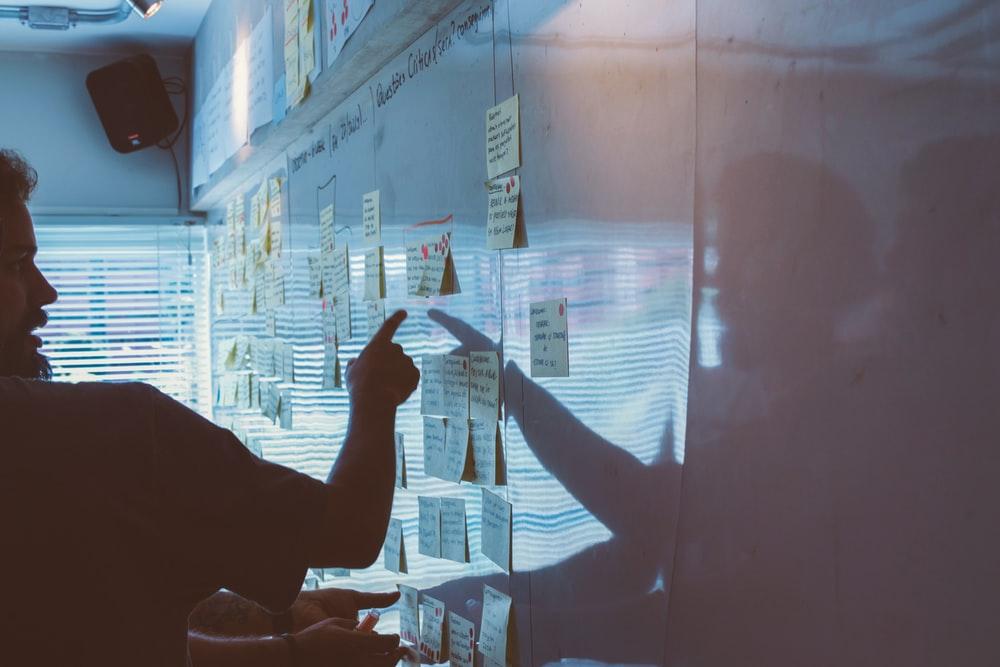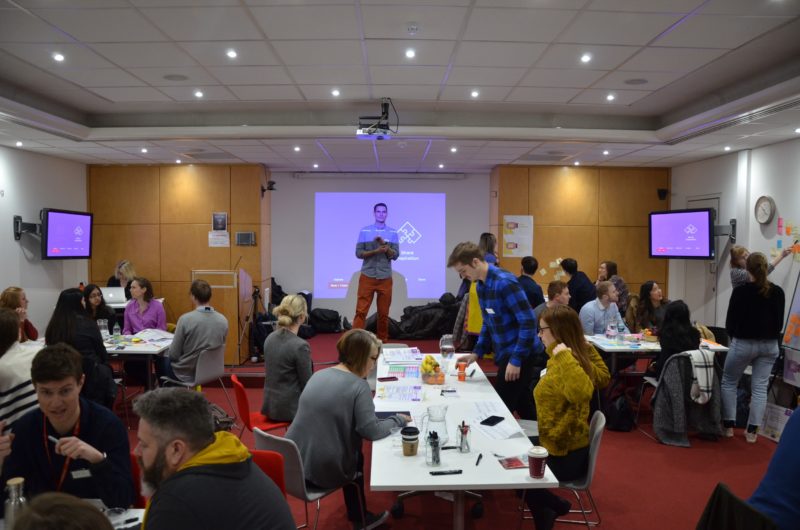
It’s easy to get stuck in our ways. We’re only human. But if transforming business is the goal, it requires completely new ways of working. Not just for some, but for everyone. So why not take on the challenge together?
Transforming mindsets

The challenge is getting people to understand how to change. What do these new behaviours and ways of working actually feel like and how do you get them excited about them?
A one-day Sprint, or hackathon, will help people experience new ways of working at scale. It uses design thinking to reshape the way people behave to achieve more, in less time. It’s a process some might find uncomfortable, sure. But if you’re trying to behave in a more agile way, mindsets need to change. Your people need to prioritise:
- Progress over perfection
Some don’t like to share their work until it’s perfect, or their thinking unless they know they’re right. But if something has to be perfect before you share it and get feedback to make it better, you’re stuck in a slow way of working.
- Learning over being right
They need to stop worrying about having all the answers and start being a team who are really good at going and finding them.
- Doing over debating
Don’t get stuck in big debates, losing hours in meeting and boardrooms violently agreeing, dissecting problems to their nth degree – you could be getting out there and doing something about it.
A design sprint process prioritises getting out there, learning, doing and building data where it doesn’t otherwise exist. It champions finding new perspectives and answers. You can start to make progress on big scary challenges. And you can stop worrying about getting the answer right, first time. After all, as the world gets more complex, the odds of thinking of that perfect solution first-time round are almost zero.

One-Day Sprints: igniting a fire under behaviour change
What teams need is a methodology, a process, and a framework they can use to make progress through a challenge and to deliver a vision. The Sprint takes teams of people and show them what it looks and feels like to work in a different way. They get people out there, collecting data, gathering learnings, interacting with customers and suppliers, and immersing themselves in the problem so they can build a richer picture of what will work, and how to take actions to towards it.
How it works:
Identify high value strategic or operational challenges.
Teams are guided through a facilitated process that helps them make fast progress on solving problems that could often have years spent on them.
Each team has a ‘decider’ – a person who pushes teams to make decisions when they get stuck in debates, makes a call on a route forward, and moves them on to the next stage.
Why it works:
Parkinson’s law – if you’re given a month to complete a task, it will take you a month. If you’re given an urgent report in a seemingly impossible time limit, somehow you make it happen. So, we take challenges that would often take many months, and give you a day to solve it. And guess what, they get solved.

The Pareto principle – normally when you get a group of people together 80% of the contribution comes from 20% of the people in the room. In this case, that’s a problem because you’re spending money on bringing these smart people together. So, what a hackathon does is give each person time independently to formulate and articulate their own ideas before sharing them with the team. When we get everyone back together to see what the team’s come up with, we go from having 20% of the room contributing to 100%. And lots of different ways of solving the problem on the table to choose from.

Rapid decision making – a lot of time is lost in discussion, or even worse, wasted aggressively agreeing. A Sprint cuts through this by offering new ways to make those decisions. For example, voting for favourite ideas using stickers to show support without discussion. Very quickly, the decider has a heat map of the different ideas the team think have the most value. It’s done within five minutes, without any discussion or deliberation.

Sharing work – it’s the bit that makes people most nervous. But it’s an important habit to get in to. Sprints get people sharing their work much earlier than they would usually feel comfortable. They guide them through a process of formulating their idea visually – e.g. storyboard or value proposition – and get them to share it others. It’s too easy to get lost in driving your own ideas and perspective. Early feedback from peers or people they’re trying to solve the problem for keeps team members focussed on finding a solution that works, not that they like.

The benefits:
When people are stuck in their ways, progression is slow. If you want to inspire more agile ways of working, don’t just tell people about it – help them live it and experience it. in a hackathon. A fast-paced environment and proactive mindset re-energises people. It takes them out of their comfort zone but inspires them to get stuff done. They’ll come away with a shared approach. They’ll know how to achieve more in less time. They’ll have new skills and more confidence that it is possible to change. And most importantly, they’ll see that working in a different way can create a richer outcome.
Find out how to run your own one-day Sprint or find a facilitator by getting in touch. Contact us at [email protected].
